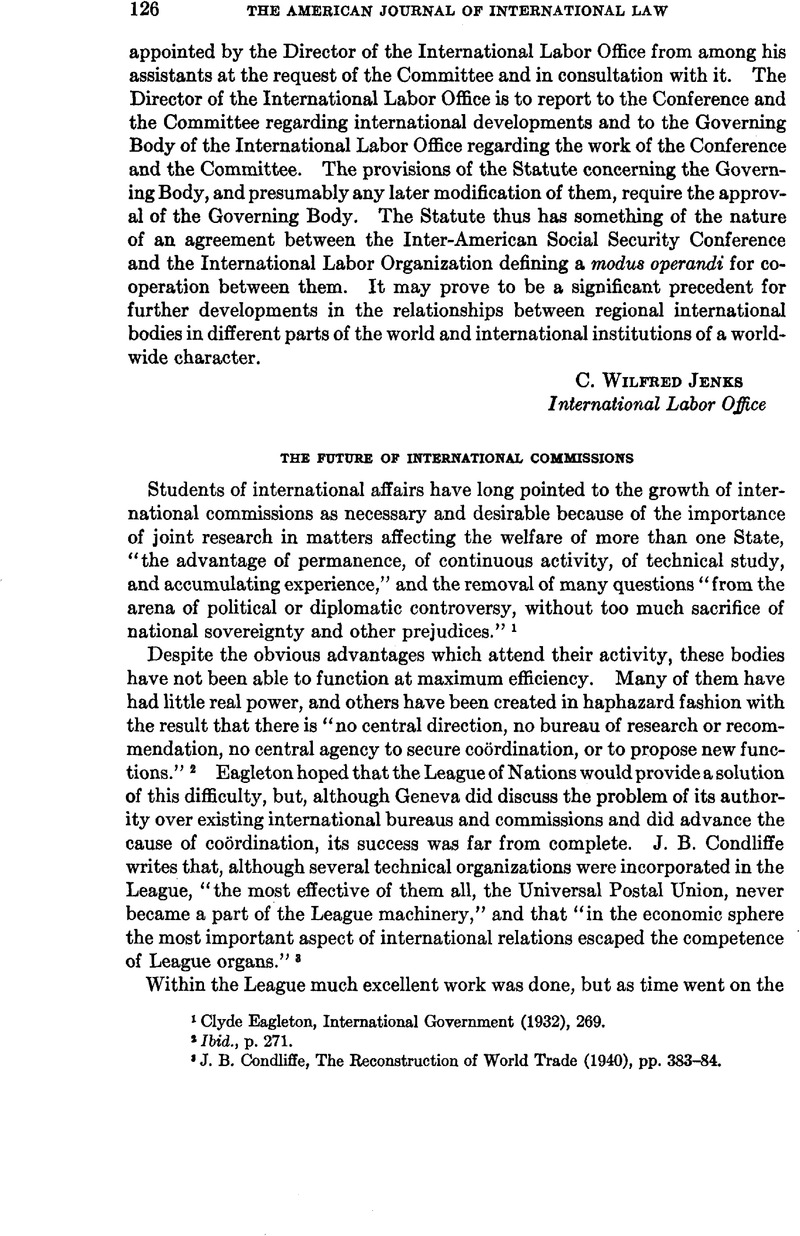No CrossRef data available.
Published online by Cambridge University Press: 12 April 2017

1 Eagleton, Clyde, International Government (1932), 269.Google Scholar
2 Ibid.., p. 271.
3 Condliffe, J. B., The Reconstruction of World Trade (1940), pp. 383–84.Google Scholar
4 League of Nations, The Development of International Cooperation in Economie and Social Affairs, 1939.
5 Commission to Study the Organization of Peace, Second Report, New York, 1942, p. 11.
6 J. B. Condliffe, op. cit., p. 392.
7 Idem.
8 Ibid., p. 386. A contrasting view holds that there is much to be said for retaining a considerable degree of elasticity in the organization of world technical cooperation. It will not materially affect the argument that a better coordination of international commissions on the American continent is much needed.
9 Mander, Linden A., Foundations of Modern World Society (1941), p. 394.Google Scholar
10 Macdonald, Austin F., American State Government and Administration (1940), p. 316 Google Scholar.
11 Linden A. Mander, op. cit., p. 26.